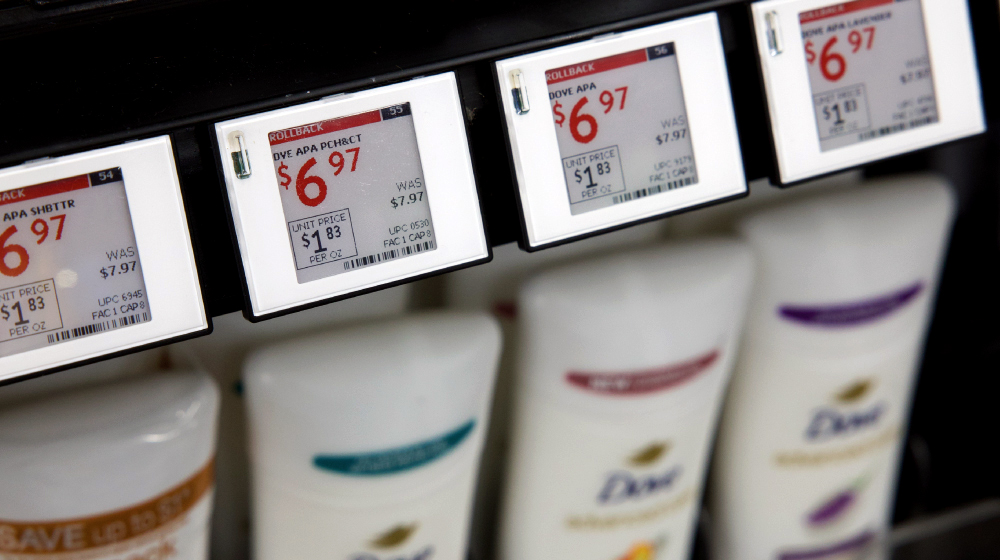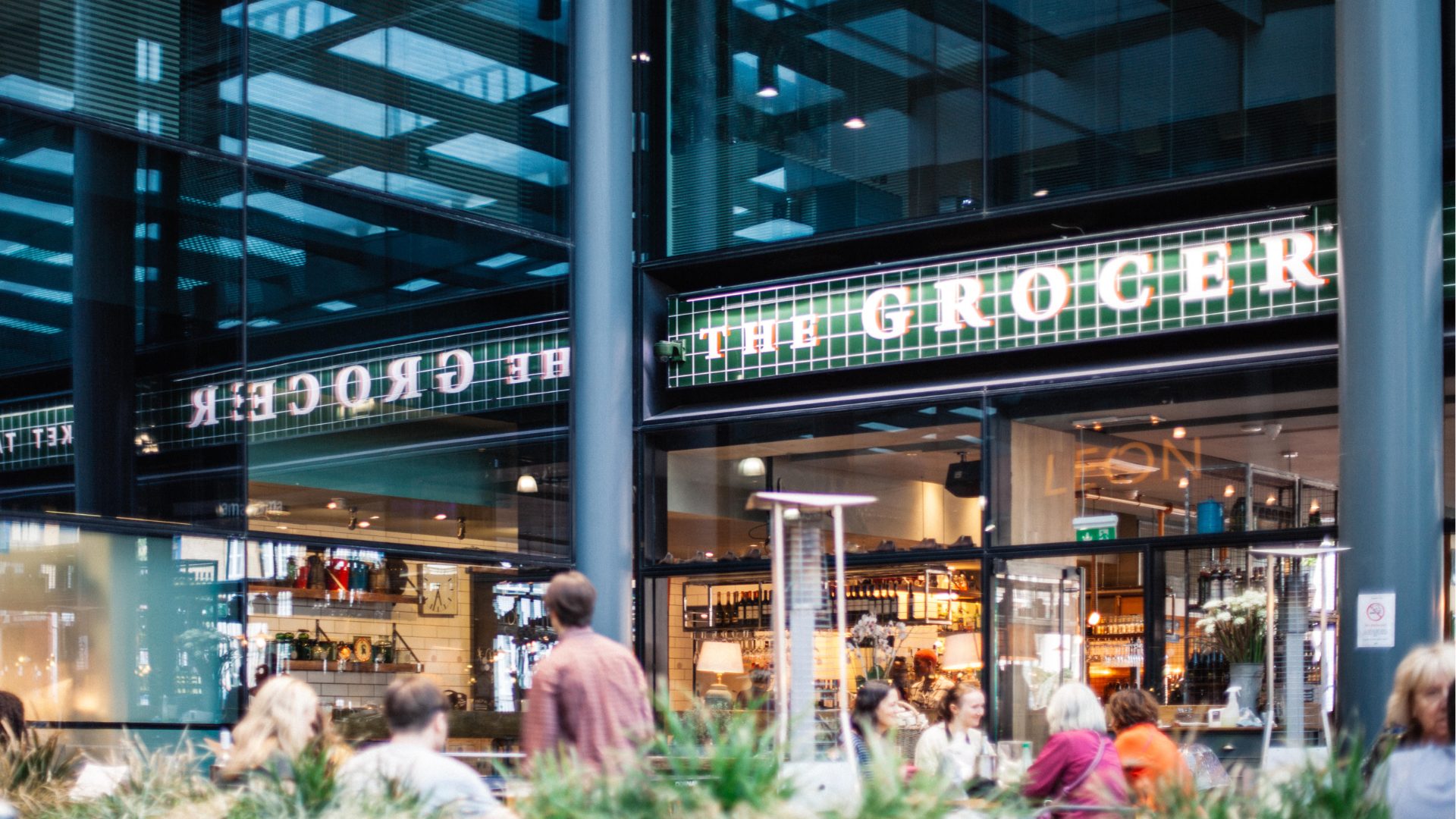In a move long anticipated by major and regional retailers across the country, Walmart has announced electronic shelf labels (ESLs) will be installed in over 2,300 stores by 2026.
The digital tag implementation follows a successful test run at a supercenter in Grapevine, Texas. The move will catapult ESLs into the public eye in the U.S., where the technology has been relatively slow to garner support. Walmart’s labels were developed with VusionGroup.
For many, the announcement makes perfect sense at a time when the omnichannel, burgeoning e-commerce, and the consumers’ (and employees’) in-store experience is in flux. Operators want more revenue; consumers want more experiences; everyone wants to save a buck. Digital signage should help accomplish that.
“Electric labels connect to the internet, making them more efficient and versatile than traditional paper tags. Retailers can display product information like prices, discounts, and inventory levels in real time, allowing for dynamic pricing strategies and increased conversion,” said Randy Mercer, chief product officer at 1WorldSync, to TFI.
“Digital shelf tags also lessen the chance of human error in pricing products, often leading to customer complaints and lost sales. Because employees can update the tags remotely, retailers save time and money on labor costs.”
To that end, Walmart said in a release that electronic shelf labels should help its employees update prices on shelves, track product supplies and inventory more efficiently, and allow them to provide customers with an enhanced shopping experience. Walmart stores stock about 120,000 items and change prices on thousands of them every week.
“Digital shelf labels are part of a broader trend across the retail sector, including superstores, grocery, and many specialty retailers,” said R.J. Hottovy, head of analytical research at Placer.ai, to TFI, also noting that in addition to employee time and efficiency tools, they will allow retailers to convey more information to customers, such as product features or QR codes to online ordering pages.
In its statement, Walmart said the shift will empower associates to use their time more efficiently by reducing the time it takes to update prices on shelves from two days to little more than two minutes; items whose SKUs need updating will be illuminated by on-shelf lights. Walmart also expects the lights will help workers sift, sort, and grab items for e-commerce orders much more quickly.
Greg Zakowicz is senior e-commerce expert at Omnisend, and he’s confident digital signage will only empower retailers and their associates. “Individual associates will no longer need to manually walk the store and change out labels by hand, reducing the number of employees needed to operate efficiently,” he said to TFI.
Zakowicz also noted that retailers (and consumers) may expect a surge in dynamic pricing once digital signage is implemented.
“Imagine that during a heat wave, Walmart can quickly adjust prices on its frozen items, like ice cream, even if only by a few cents. Pennies add up and will help increase store profits,” he added, also noting that digital signage should help eliminate price discrepancies between what’s listed on the shelf and what shows up at the checkout counter; with linked pricing systems via wi-fi, these errors should be reduced or even eliminated altogether.
From a consumer perspective, Zakowicz noted that electronic labels will only help shoppers’ omnichannel experiences. Perks like same-day delivery from Walmart+ demand that associates move quickly throughout the store to nab what they need to fulfill same-day orders, which takes time and valuable resources away from larger-picture duties within the store. Digital labels should help eliminate human error when picking a similar but incorrect item.
Looking ahead, just because digital signage may not interact with QR codes now doesn’t mean they won’t in the future. Potential interactive elements will allow retailers to gamify in-store shopping, for instance, offering further discounts while enticing consumers to spend more.
“The digital element presents an expanded shopper/marketer revenue stream for the company,” Zakowicz said.
Other food retailers in the digital shelf game include Amazon-owned Whole Foods Market, Good Food Holdings, and Schnuck Markets.
The Food Institute Podcast’s “Foodservice Gamechangers” Series
Get to know the men and women behind the scenes of foodservice distribution in a new, limited series from The Food Institute Podcast called “Foodservice Gamechangers.” Recently, Pat Mulhern, advisor to The Food Institute, sat down for brief conversations with seven of the most influential foodservice merchandising and distribution leaders. Highlighting their food career journeys and management styles, the conversations feature insightful thoughts on what may lie ahead for manufacturers, distributors, and operators in foodservice.











